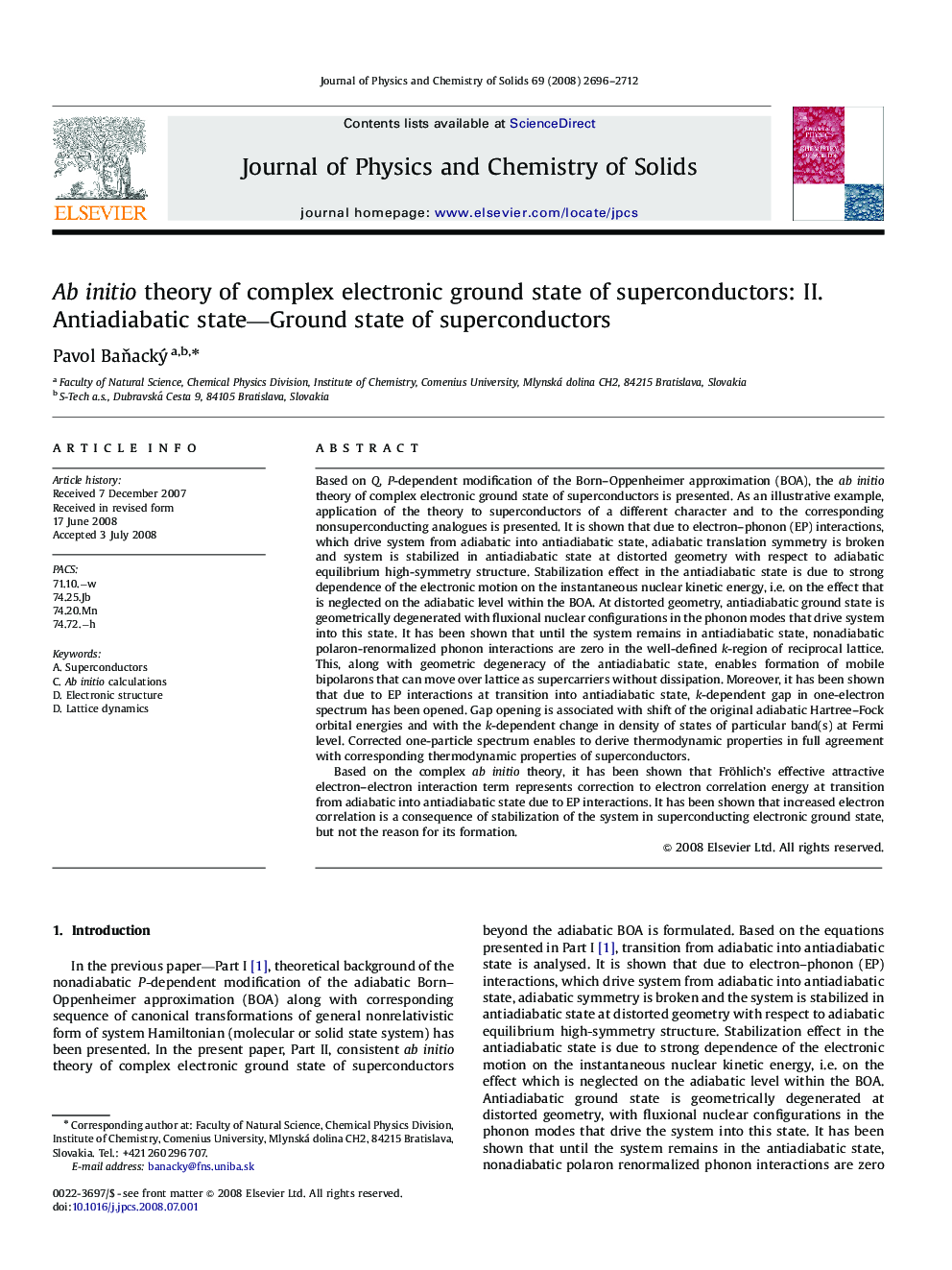| Article ID | Journal | Published Year | Pages | File Type |
|---|---|---|---|---|
| 1517082 | Journal of Physics and Chemistry of Solids | 2008 | 17 Pages |
Based on Q, P-dependent modification of the Born–Oppenheimer approximation (BOA), the ab initio theory of complex electronic ground state of superconductors is presented. As an illustrative example, application of the theory to superconductors of a different character and to the corresponding nonsuperconducting analogues is presented. It is shown that due to electron–phonon (EP) interactions, which drive system from adiabatic into antiadiabatic state, adiabatic translation symmetry is broken and system is stabilized in antiadiabatic state at distorted geometry with respect to adiabatic equilibrium high-symmetry structure. Stabilization effect in the antiadiabatic state is due to strong dependence of the electronic motion on the instantaneous nuclear kinetic energy, i.e. on the effect that is neglected on the adiabatic level within the BOA. At distorted geometry, antiadiabatic ground state is geometrically degenerated with fluxional nuclear configurations in the phonon modes that drive system into this state. It has been shown that until the system remains in antiadiabatic state, nonadiabatic polaron-renormalized phonon interactions are zero in the well-defined k-region of reciprocal lattice. This, along with geometric degeneracy of the antiadiabatic state, enables formation of mobile bipolarons that can move over lattice as supercarriers without dissipation. Moreover, it has been shown that due to EP interactions at transition into antiadiabatic state, k-dependent gap in one-electron spectrum has been opened. Gap opening is associated with shift of the original adiabatic Hartree–Fock orbital energies and with the k-dependent change in density of states of particular band(s) at Fermi level. Corrected one-particle spectrum enables to derive thermodynamic properties in full agreement with corresponding thermodynamic properties of superconductors.Based on the complex ab initio theory, it has been shown that Fröhlich's effective attractive electron–electron interaction term represents correction to electron correlation energy at transition from adiabatic into antiadiabatic state due to EP interactions. It has been shown that increased electron correlation is a consequence of stabilization of the system in superconducting electronic ground state, but not the reason for its formation.
